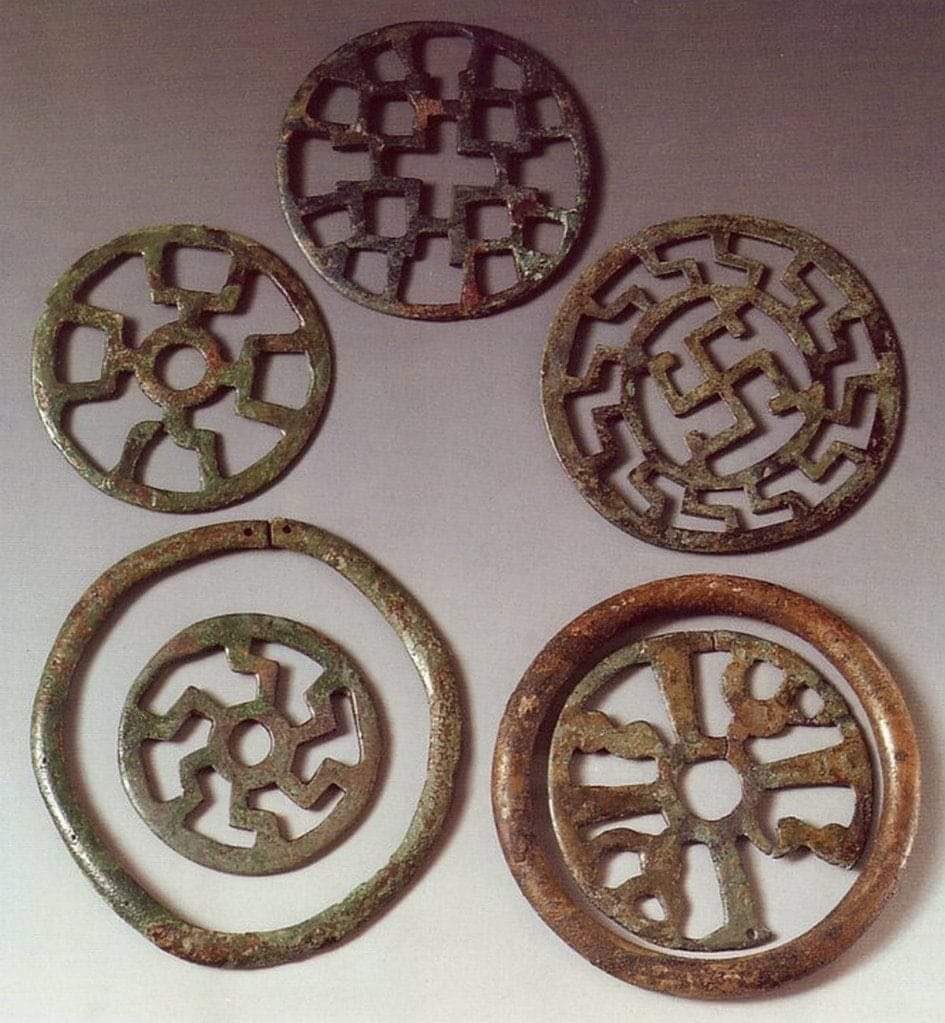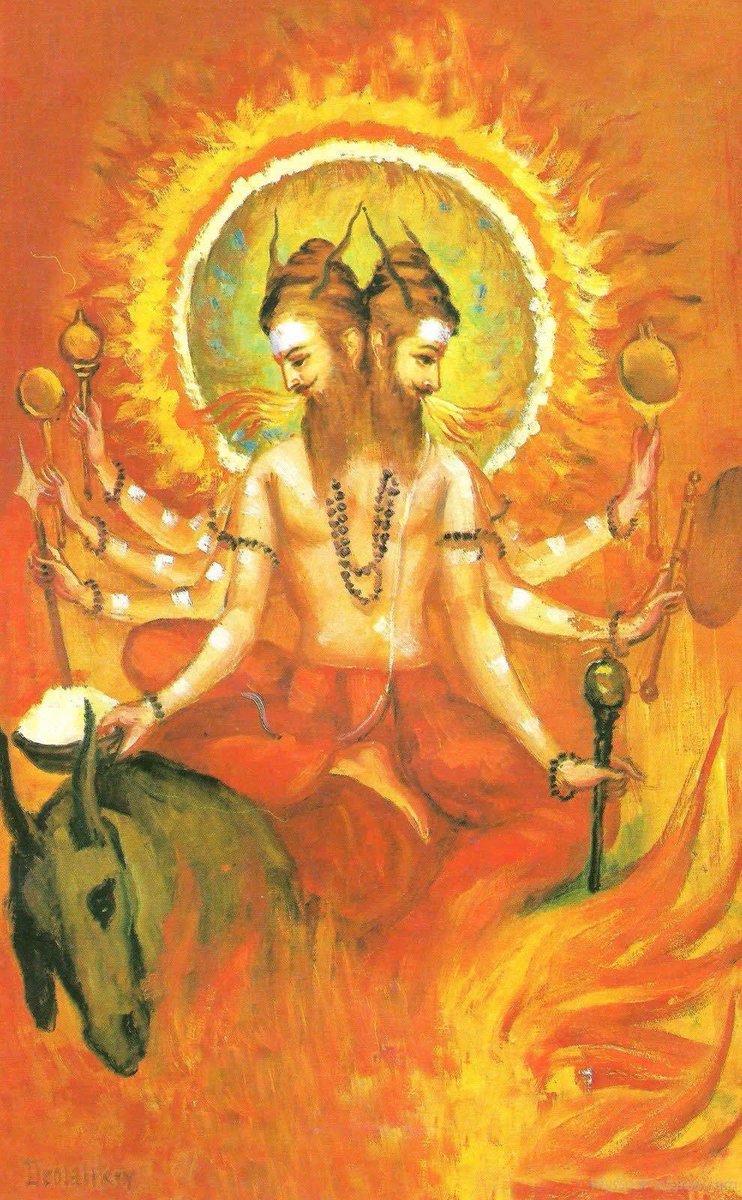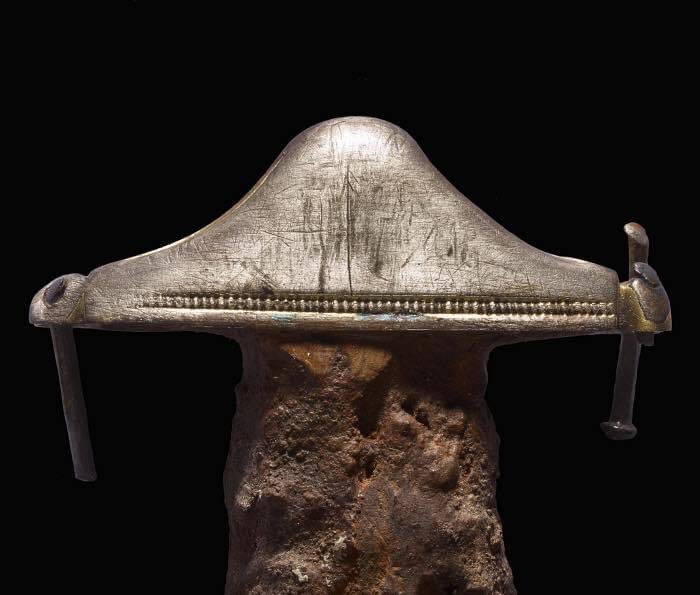
Independent Indo-European historian. Folkish Heathen. Outdoorsman. Goði. ᛟ
How to get URL link on X (Twitter) App


 I’ll teach them that while there’s no jolly old man who will literally come down the chimney and leave presents, what lies beneath this caricature is absolutely real; Odin riding through the night sky with our ancestors in winter, the Álfar/Elves, in the Wütende Heer,
I’ll teach them that while there’s no jolly old man who will literally come down the chimney and leave presents, what lies beneath this caricature is absolutely real; Odin riding through the night sky with our ancestors in winter, the Álfar/Elves, in the Wütende Heer,

 The name Tyr means simply “the/a God”, and many of Odin’s epithets contain -tyr; ex. Geirtyr (spear-god). In the Skáldskaparmál, Thor is attested as Chariot-Tyr.
The name Tyr means simply “the/a God”, and many of Odin’s epithets contain -tyr; ex. Geirtyr (spear-god). In the Skáldskaparmál, Thor is attested as Chariot-Tyr.
 It was a celebration in honour of the Álfar (elves), held at the end of the harvest season, and it was held at home with one's family as opposed to a public place of worship. Álfar were believed to hold power over health and fertility-and could cause illness, and destroy crops.
It was a celebration in honour of the Álfar (elves), held at the end of the harvest season, and it was held at home with one's family as opposed to a public place of worship. Álfar were believed to hold power over health and fertility-and could cause illness, and destroy crops.

 In the forests of Thorenwald, a young woman had fallen in love with a man from a nearby village. Her father didn’t approve of him, so they would meet in a sacred oak grove between their two villages.
In the forests of Thorenwald, a young woman had fallen in love with a man from a nearby village. Her father didn’t approve of him, so they would meet in a sacred oak grove between their two villages.

 According to Bede, the Anglo Saxons called the beginning of winter Ƿinterfylleþ, a term composed of winter, and full moon. The first full moon of what would now be October (or the end of September) marked the beginning of winter;
According to Bede, the Anglo Saxons called the beginning of winter Ƿinterfylleþ, a term composed of winter, and full moon. The first full moon of what would now be October (or the end of September) marked the beginning of winter;

 First, paganism teaches us to love our peoples and cultures; these identities which they work tirelessly to demonize, deconstruct, and strip away.
First, paganism teaches us to love our peoples and cultures; these identities which they work tirelessly to demonize, deconstruct, and strip away.




 With the most well-known design, you see several arms which resemble Ursa Major and/or Minor revolving around the North Star, with an extra curve where the “handle” of the dipper is. Many surviving Zierscheiben also incorporate a Fylfot.
With the most well-known design, you see several arms which resemble Ursa Major and/or Minor revolving around the North Star, with an extra curve where the “handle” of the dipper is. Many surviving Zierscheiben also incorporate a Fylfot.

https://twitter.com/hammerandvajra/status/1702400592851902877
 Hindus, Buddhists, and the Navajo didn’t back away from the Fylfot/Svastika because the Austrian painter used it, and European pagans could learn a thing or two from them. Besides, there are variations which look little like the WWII-era Hakenkreuz.
Hindus, Buddhists, and the Navajo didn’t back away from the Fylfot/Svastika because the Austrian painter used it, and European pagans could learn a thing or two from them. Besides, there are variations which look little like the WWII-era Hakenkreuz.

 Tyr means simply “the/a God”, and many of Odin’s epithets contain -tyr; ex. Geirtyr (spear-god). In the Skáldskaparmál, Thor is attested as “Chariot-Tyr”. The arguments claiming Tyr was the “original” Sky Father are based on lazy linguistics.
Tyr means simply “the/a God”, and many of Odin’s epithets contain -tyr; ex. Geirtyr (spear-god). In the Skáldskaparmál, Thor is attested as “Chariot-Tyr”. The arguments claiming Tyr was the “original” Sky Father are based on lazy linguistics.

 A tradition that’s survived in Scandinavia and Eastern Europe is masked processions on the winter solstice, to scare away evil spirits and usher in the spring. People dress as various vicious animals, such as wolves and bulls, and mythological creatures.
A tradition that’s survived in Scandinavia and Eastern Europe is masked processions on the winter solstice, to scare away evil spirits and usher in the spring. People dress as various vicious animals, such as wolves and bulls, and mythological creatures.

 And for these disenfranchised Europeans, looking for a new community that will build them up instead of demonizing them and telling them what pieces of shit they are, the most accessible option is going to be Orthodox Christianity.
And for these disenfranchised Europeans, looking for a new community that will build them up instead of demonizing them and telling them what pieces of shit they are, the most accessible option is going to be Orthodox Christianity.
 While there are certainly deities with regional cults that were only worshipped by certain cultures, the fact that so many cultures agree there are certain deities, which share multiple key characteristics, points towards one ultimate Indo-European pantheon.
While there are certainly deities with regional cults that were only worshipped by certain cultures, the fact that so many cultures agree there are certain deities, which share multiple key characteristics, points towards one ultimate Indo-European pantheon.

 First of all, every single Indo-European religion has an aspect of ancestor worship, which inseparably binds a faith to its People.
First of all, every single Indo-European religion has an aspect of ancestor worship, which inseparably binds a faith to its People.


 The Old English name ēþel, meaning homeland, comes from the same root as OE æþele and ON aðall; nobility, from Proto-Germanic aþala/ōþala; nobility, as well as people, family, descent, and nature, as in one’s noble disposition.
The Old English name ēþel, meaning homeland, comes from the same root as OE æþele and ON aðall; nobility, from Proto-Germanic aþala/ōþala; nobility, as well as people, family, descent, and nature, as in one’s noble disposition.



 It includes a few original Anglo Saxon medical texts; the Old English Herbarium, the Lacnunga, and part of Bald’s Leechbook, with the original facing Old English text.
It includes a few original Anglo Saxon medical texts; the Old English Herbarium, the Lacnunga, and part of Bald’s Leechbook, with the original facing Old English text. 
 When a boy comes of age, 15-17, he undergoes a ritual death and rebirth. He trades his brightly coloured shuka (cloak) for a black one, shaves his head, paints his face with white clay, and leaves his tribe.
When a boy comes of age, 15-17, he undergoes a ritual death and rebirth. He trades his brightly coloured shuka (cloak) for a black one, shaves his head, paints his face with white clay, and leaves his tribe.


 First of all, like it or not, our sources on European paganism are fragmentary. Charlemagne and his friends made sure of that. The “Dark Ages” are called such because of the lack of records, due to the destruction of literature with any hint of paganism.
First of all, like it or not, our sources on European paganism are fragmentary. Charlemagne and his friends made sure of that. The “Dark Ages” are called such because of the lack of records, due to the destruction of literature with any hint of paganism.


 In the Gylfaginning, Heimdallr is attested as having unmatched vision and hearing; he can hear grass growing and the wool growing on a sheep. He would also be able to hear every prayer. As fire is used in every ritual, Agni sees all things, and protects every hearth.
In the Gylfaginning, Heimdallr is attested as having unmatched vision and hearing; he can hear grass growing and the wool growing on a sheep. He would also be able to hear every prayer. As fire is used in every ritual, Agni sees all things, and protects every hearth.

 From the Poetic Edda:
From the Poetic Edda:
 Völuspa: oathbreakers, kinslayers and adulterers are sent to Nástrond, where they are shredded by Níðøggr and a wolf (Garmr?).
Völuspa: oathbreakers, kinslayers and adulterers are sent to Nástrond, where they are shredded by Níðøggr and a wolf (Garmr?).


 The Anglo Saxon sword pommels with singular Æsc and Tir runes.
The Anglo Saxon sword pommels with singular Æsc and Tir runes.
